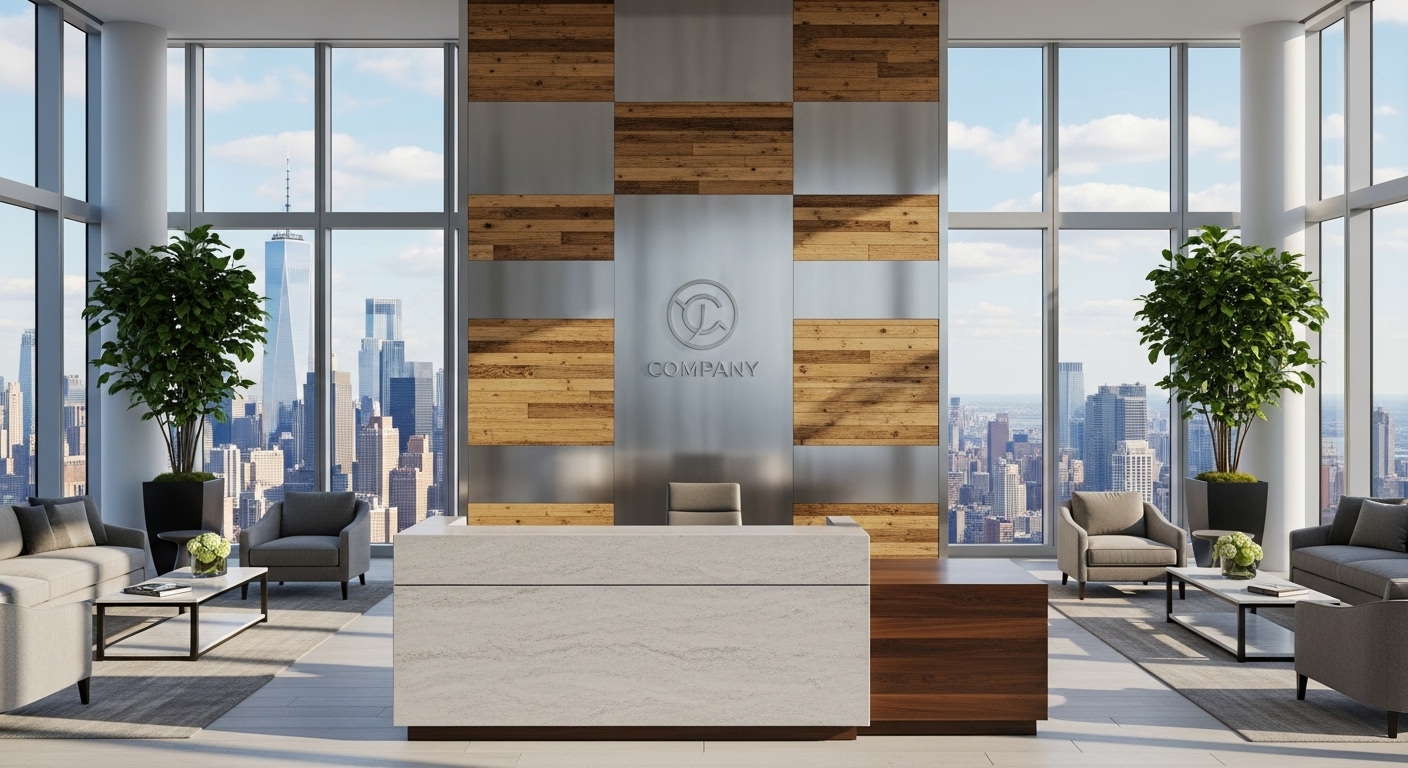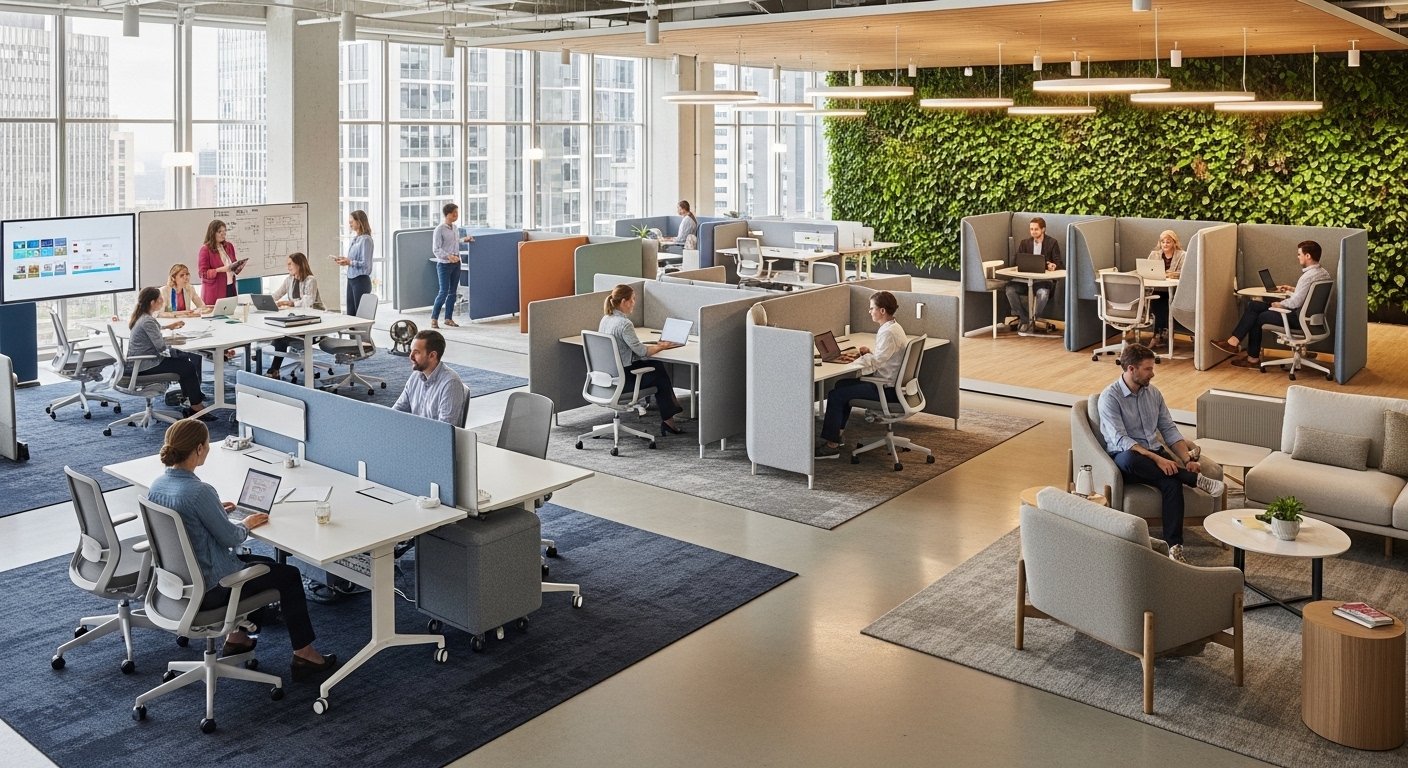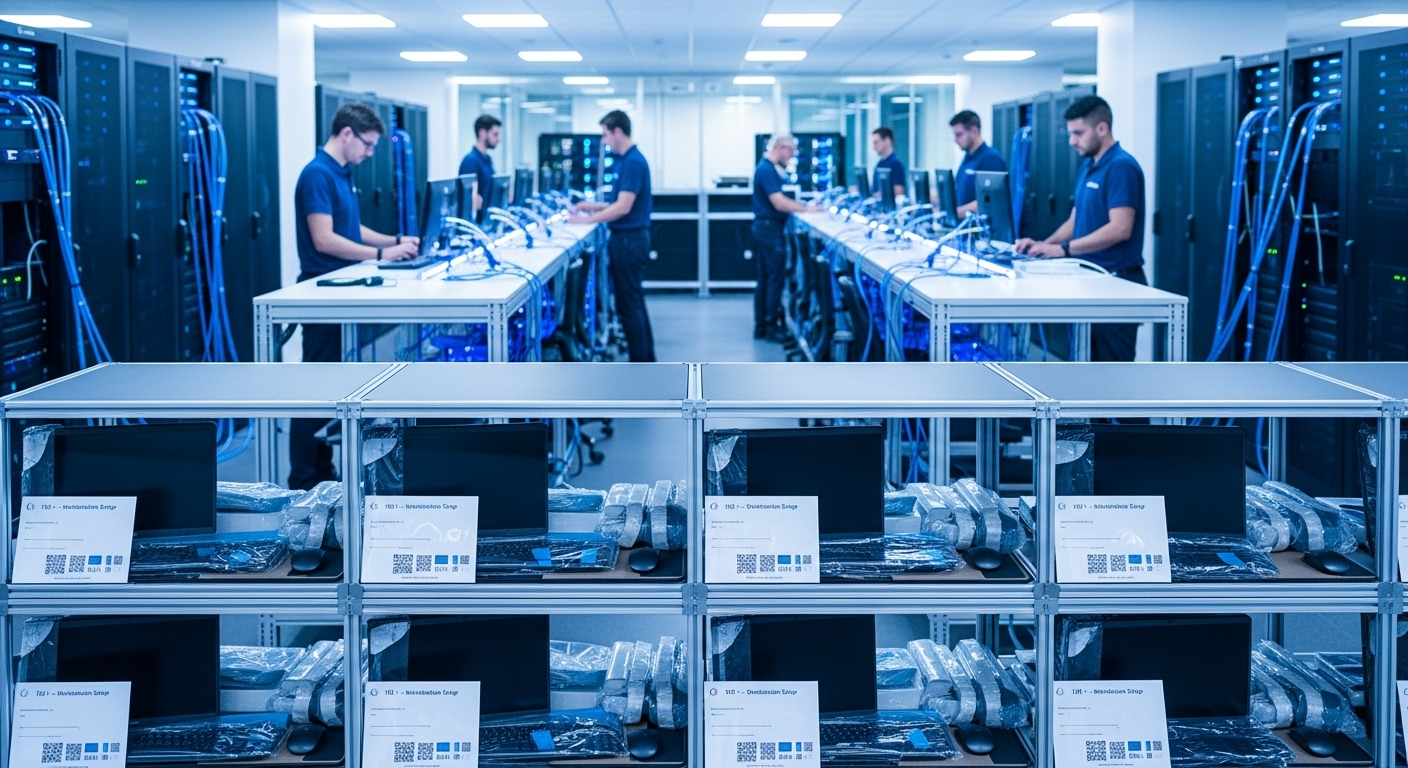In a city defined by iconic landmarks and relentless ambition, your office is more than just an address—it’s a critical landmark for your brand. In the competitive landscape of New York City, where businesses vie for top talent and discerning clients, a generic workspace is a missed opportunity. Spatial branding goes far beyond placing a logo on the wall; it’s the art and science of transforming a physical environment into an immersive experience that communicates your company’s values, culture, and vision. This strategic approach turns your office into a powerful tool for storytelling, employee engagement, and client impression. This guide will provide a comprehensive blueprint for branding your physical space, covering how to decode your brand’s core identity, leverage the psychology of design, create meaningful touchpoints, and ultimately build a workspace that is a true manifestation of your mission.
Decoding your brand DNA for physical space
Before selecting a single paint swatch or piece of furniture, the foundational step in spatial branding is a deep dive into your company’s core identity. This process involves translating abstract concepts like values, mission, and culture into a tangible design language. Ask critical questions: Is your brand innovative and disruptive, or is it established and trustworthy? Is your culture highly collaborative and energetic, or is it more focused and introspective? The answers will dictate every subsequent design choice. For example, a fintech startup aiming to project transparency and modernity might opt for an open floor plan with glass walls, sleek metal finishes, and a minimalist aesthetic. In contrast, a prestigious law firm looking to convey stability and discretion might choose rich wood tones, private offices, and classic, substantial furniture. The key is to create a design brief that acts as a constitution for your space. This document should explicitly link brand attributes to design elements. ‘Collaboration’ might translate to modular furniture and numerous whiteboard walls, while ‘sustainability’ could mean using reclaimed materials and incorporating a living plant wall. This initial strategic work ensures that your office doesn’t just look good, but that it authentically feels like your brand from the moment someone steps inside.
The psychology of color and materials
Every element within your workspace sends a subconscious message, and color and materials are your primary vocabulary. Understanding their psychological impact is crucial for creating an environment that elicits the desired emotional response. Color theory provides a powerful framework for this. Blues are often associated with trust, calmness, and productivity, making them suitable for focus areas or client-facing meeting rooms. Greens can reduce eye strain and evoke feelings of balance and nature, ideal for wellness rooms or common areas. Warmer colors like yellow and orange can stimulate creativity and energy, perfect for brainstorming zones. However, your brand’s specific color palette should be the primary guide, adapted thoughtfully for a three-dimensional space. Materials work in tandem with color to build a tactile brand experience. The coolness of polished concrete and exposed steel can signify an industrial, raw, and innovative brand identity. Conversely, the warmth of natural wood, soft textiles, and cork can create a welcoming, comfortable, and human-centric atmosphere. The goal is to create a multi-sensory environment that is cohesive and intentional, where the interplay of light, texture, and color consistently reinforces your brand’s core message without overwhelming the senses.
Beyond the lobby: creating branded touchpoints throughout the office
Effective spatial branding extends far beyond the reception area, which is merely the introduction to your brand story. The most impactful designs weave the brand narrative throughout the entire employee and visitor journey. This means identifying and creating consistent, branded touchpoints in every part of the workspace. For instance, meeting rooms can be named after company values, key historical milestones, or inspirational figures relevant to your industry, reinforcing what the company stands for. Large-scale wall graphics or custom murals can transform a simple corridor into a visual timeline of the company’s history or a showcase of its most significant achievements. Even utilitarian spaces like kitchens and break rooms offer branding opportunities; using brand colors on cabinetry, custom coasters, or even commissioning a local artist to create a piece that reflects the company culture can make these spaces feel special and integrated. Creating these moments is particularly vital when hosting partners and clients in a global hub like New York City, as each touchpoint reinforces a professional and cohesive brand identity. The goal is to create a space where employees feel a sense of belonging and pride, and visitors leave with a clear, memorable understanding of who you are and what you represent.
Integrating technology for an interactive brand experience
In today’s digital-first world, integrating technology into your physical space is essential for creating a modern and dynamic brand experience. Technology should not be an afterthought but a core component of your design strategy, used to enhance communication, interaction, and brand storytelling. Digital signage is a versatile tool that can replace static posters and announcements. In the lobby, screens can be used to display a personalized welcome message for important clients, showcase recent company awards, or run a dynamic video that tells your brand story. Within the office, they can share real-time company metrics, celebrate employee milestones, and promote internal events, fostering a sense of transparency and connection. Interactive installations can take this a step further. Imagine a touch-screen wall that allows visitors to explore your company’s global projects or an interactive data visualization that brings your impact to life. Smart office technology, such as app-based room booking systems or lighting that adjusts to employee preferences, can also reflect a brand’s commitment to innovation, efficiency, and employee well-being. By thoughtfully embedding technology, you create a responsive, engaging, and forward-thinking environment that demonstrates your brand is not just current but actively shaping the future.
Employee well-being as a cornerstone of brand identity
A brand that claims to value its people must manifest that value in its physical environment. In the intense and competitive talent market of New York City, a workspace that prioritizes employee well-being is no longer a perk but a powerful statement of brand identity and a critical retention tool. This approach, often incorporating principles of biophilic design, focuses on connecting people with nature. Elements like extensive indoor plants, living walls, natural materials, and maximizing natural light have been proven to reduce stress, improve cognitive function, and boost creativity. Beyond nature, well-being extends to providing a variety of work settings that cater to different tasks and personality types. This includes not only open, collaborative areas but also dedicated quiet zones for focused work, private phone booths for calls, and comfortable lounge areas for informal meetings. Furthermore, a true commitment to well-being involves creating spaces that support physical and mental health, such as wellness rooms for meditation or prayer, fully equipped modern kitchens that encourage healthy eating, or even providing access to fitness facilities. When you invest in your employees’ holistic well-being through thoughtful design, you are branding your organization as a supportive, human-centric, and desirable place to work.
Measuring the ROI of your branded space
Investing in spatial branding is a significant undertaking, and like any business strategy, its success should be measured. While some benefits are intangible, many can be tracked to demonstrate a clear return on investment (ROI). One of the most direct metrics is employee engagement and retention. Post-occupancy surveys can be used to gauge employee satisfaction with the new environment, asking specific questions about productivity, collaboration, and their sense of connection to the company culture. Tracking employee turnover rates before and after the redesign can provide a hard financial metric, as high retention significantly reduces recruitment and training costs. Another key area is talent acquisition. A well-designed, branded office can be a powerful recruiting tool. Track feedback from candidates during interviews and monitor metrics like offer acceptance rates. Client perception is also crucial. Anecdotal feedback from clients and partners is valuable, but you can also look for increases in client referrals or positive mentions on social media. The workspace itself becomes a marketing asset, generating content for your website, social channels, and recruitment materials. In a high-cost real estate market like New York City, proving that your office is more than just an expense—that it’s an active contributor to culture, talent, and revenue—is the ultimate validation of a successful spatial branding strategy.
In conclusion, branding your workspace is an exercise in strategic identity-building. It’s the process of transforming square footage into a living, breathing embodiment of your company’s purpose. By moving beyond simple aesthetics and focusing on a holistic strategy, you create more than just a beautiful office. You build a cultural hub that attracts and retains top talent, a powerful sales tool that leaves a lasting impression on clients, and a productive environment that empowers your team to do their best work. The journey begins with a deep understanding of your brand’s DNA, which then informs every choice in color, material, and layout. It extends through the entire space with deliberate touchpoints, is amplified by technology, and is grounded in a genuine commitment to employee well-being. In the dynamic and demanding environment of New York City, your physical space is a constant broadcast of who you are. A thoughtfully branded office ensures that message is clear, compelling, and a foundational asset for long-term growth and success.





